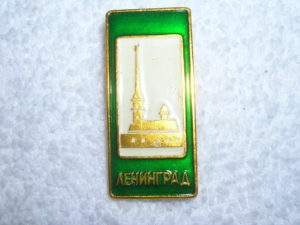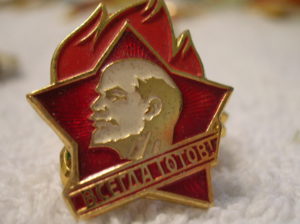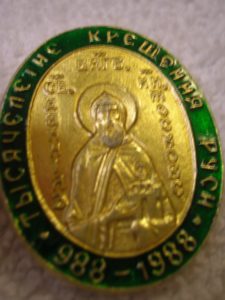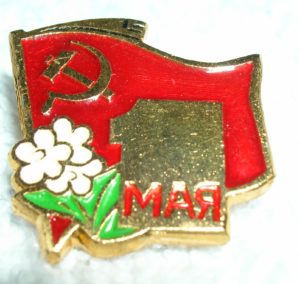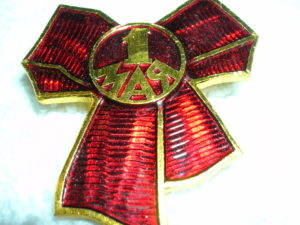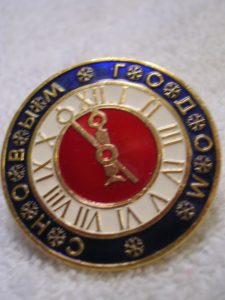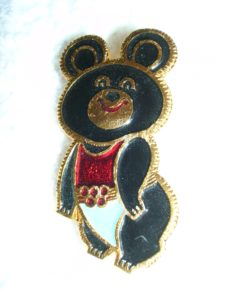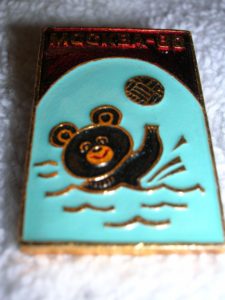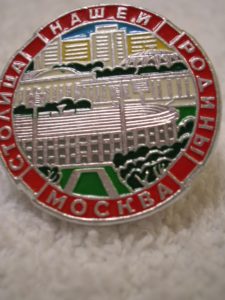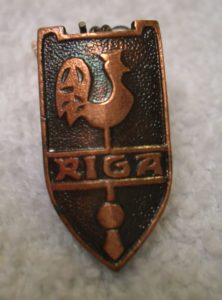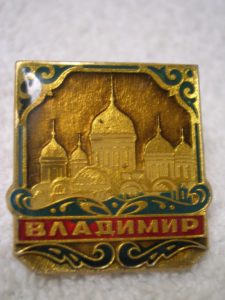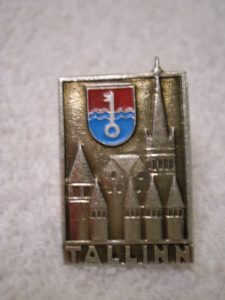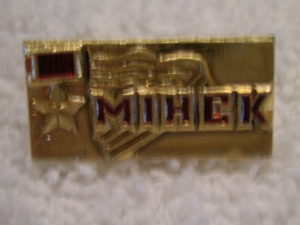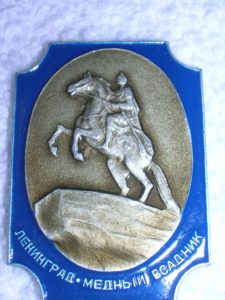
“Leningrad – The Bronze Horseman” printed under a relief of the Bronze Horseman, the statue representing Peter the Great. I saw this across the river from my bus stop at the university.
Oh, the Places You’ll Go! Before LinkedIn or Google Plus, There Were the Pins…
A lot of times we remember the rivalry of the Cold War. We remember the 1980 boycott, Reagan’s meetings with Gorbachev, and the way Sovietologists scoured every syllable of Pravda for hidden political meaning.
As a student during Perestroika, however, there was a lot of cool excitement about studying Russian and going to the Soviet Union. Nerdy, bookworm, we were the Big Bang Theory Crowd before the Big Bang Theory Crowd came around. Nirvana of Sovietology in that period was finally achieving acceptance to a study abroad program in Russia. There were basically two programs that dominated the environment back then: Council of International Educational Exchange, CIEE, based in Leningrad, and the American Council of Teachers of Russian program in Moscow. I ended up in Leningrad. I was much more interested in the cultural aspects of Russian studies – music, and especially literature. Or rather, Russian Literature. Especially Russian Poetry. I wanted to see the city of Gogol, Dostoevsky, and Akhmatova.
One fun aspect of study abroad in Russia was trading pins. Little lapel pins. If done properly, you would end up with your coat covered in pins demonstrating various things. First were pins that showed scenes from the city where you stayed. You also would buy pins you could trade. Also, you would get pins as presents from people you met. It was a way to show first degree relationship in the day when there was no LinkedIn or Google plus.
So, last summer, my mother hands me a box to bring with me. She had been cleaning out a part of the house and ran into one of my college “memory boxes.” I opened it and inside – still in an old Soviet frozen strawberry bag – was my old collection of Soviet pins.
Besides the plain nostalgia it brought for a younger, more optimistic self, finding the pins served as a visual reminder of how sophisticated mass produced Soviet culture actually was. It allowed for a standardized way to represent localized experiences. Pins represented well known local attractions, historical events, and political pride.
Pins could be classified under general categories. Most common were the pins that showed local pride. These pins showed monuments or iconic images of a given place. I spent my time in Leningrad in 1988, so the bulk of my collection ha mostly to do with the mythology of the city of Leningrad, particularly with Leningrad as the cradle of the Bolshevik Revolution
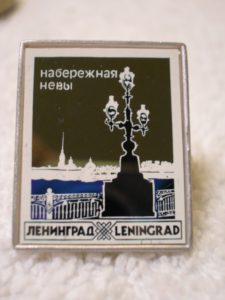
Captions: “Embankments of the Neva: Leningrad.” Vintage: @1988. The university is located on the embankment of the Neva River.
There also were pins designed to reflect pride in the Soviet Union’s revolutionary past, and their political uniqueness.

Pin with the caption “V. I. Lenin.” Image of Vladimir Ilich Lenin with a background of the Soviet flag.
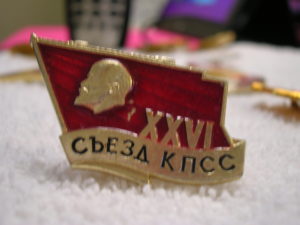
Pin in honor of the 27th Congress of the Communist Party of the Soviet Union, or as we know it from its acronym, KPSS.
There were pins to mark holidays, anniversaries, and other special occasions.
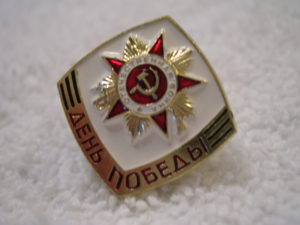
May 9. Day of the Victory of the Great Patriotic War, also known as World War II. I think this is my favorite pin.
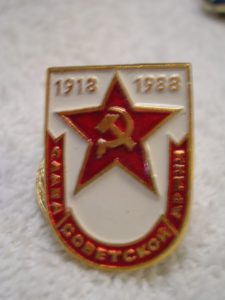
Caption reads: “Glory to the Soviet Army.” Celebrating the 70th anniversary of the Bolshevik Revolt.
Then there were the city pins you would get as you traveled, or that you would exchange when you met people from different cities.
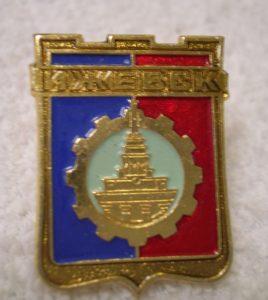
Izhevsk. I had a pen pal from there. We met at Brown when their delegation visited us. I saw her again in Moscow.
What do you remember when you revisit these kinds of symbols? First, you remember how ubiquitous these pins were. You remember how you could not get away from Lenin, no matter where you were. Always, everywhere. Statues. Pictures. Posters. You remember how self-conscious the Soviets were of making sure everyone had one consistent vision of what constituted Soviet history. How they always, always emphasized the heroic, and everyone seemed blissfully ignorant of the ugly, like Stalin. How actually cool the visual representations of revolutionary Soviet culture actually were.
You also wonder. Even if these pins were made for mass consumption, the amount of attention placed to the aesthetic quality of the pins. Even almost thirty years and an extreme camera close-up cannot take away from the stunning visual quality of some of these pins.
And last, but not least, you always left thinking you brought too many with you. But now I wish I had saved more.

